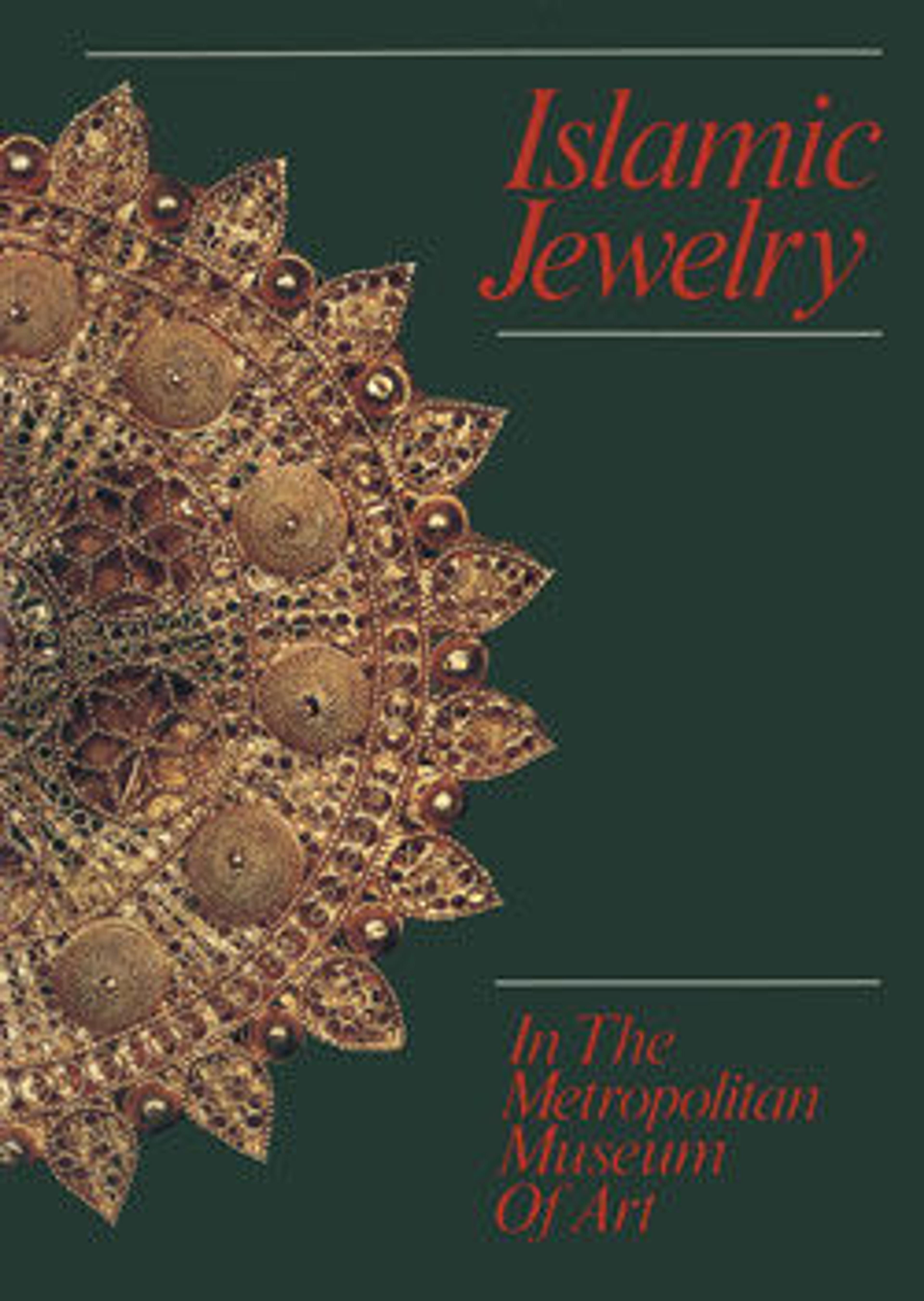Necklace
This lebba, or wedding necklace worn by a bride, is made up of the traditional number of seven pendants of multiple shapes. The crescent-and-moon motif may allude to an eyebrow and an iris, a talismanic form that protects the wearer from the evil eye. The triangular motif is known as gharnati ("from Granada"), indicating the history of Andalusian craftsmen in Morocco. The ten elongated and ribbed beads separating the pendants are known as kraqueb.
Artwork Details
- Title: Necklace
- Date: 19th–20th century
- Geography: Attributed to Morocco
- Medium: Silver (?), gilded; red, green and yellow glass
- Dimensions: H. 5 1/2 in. (14 cm)
W. 14 1/4 in. (36.2 cm) - Classification: Jewelry
- Credit Line: Gift of Mrs. Paul Cauvin, 1967
- Object Number: 67.145.12
- Curatorial Department: Islamic Art
More Artwork
Research Resources
The Met provides unparalleled resources for research and welcomes an international community of students and scholars. The Met's Open Access API is where creators and researchers can connect to the The Met collection. Open Access data and public domain images are available for unrestricted commercial and noncommercial use without permission or fee.
To request images under copyright and other restrictions, please use this Image Request form.
Feedback
We continue to research and examine historical and cultural context for objects in The Met collection. If you have comments or questions about this object record, please complete and submit this form. The Museum looks forward to receiving your comments.
